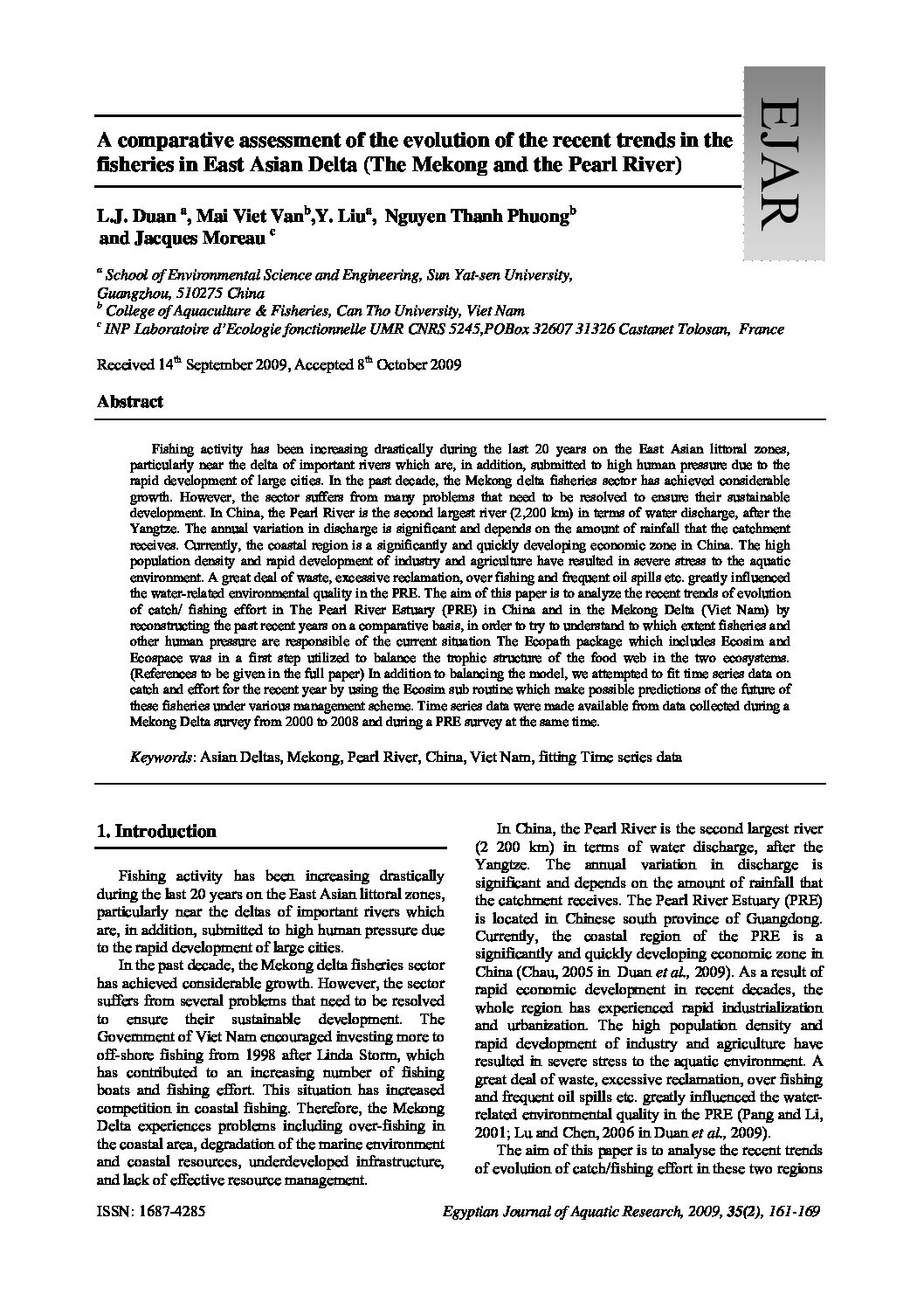Categories
vol-35ASSESSMENT OF INSHORE COMMERCIAL FISHERIES OF
HALAIEB / SHALATIEN AREA “RED SEA”, EGYPT
MAHMOUD H. HATEM;* EZZAT A. ALTAF ** AND IBRAHIM A. MOHAMED *
*National Institute of Oceanography and Fisheries, Alex., Egypt
**Oceanography Department, Faculty of Science, Alexandria University
[email protected]
Keywords: Red Sea, Halaieb, Shalatien, Fisheries Biology,Fisheries Management,
Epinephelus areolatus, Lethrinus nebulosus and Scarus ghobban.
ABSTRACT
The area of Halaieb and Shalatien lies on the south east part of Egypt. It extends from
latitude 22o
to 23o 8′ N. The landed catch of the commercial fish families were studied. It
comprises about 58 common fish species belonging to 23 fish families. The dominant fish
families in the area are Serranidae (39.76%), Lethrinidae (9.78%) and Scaridae (9.67%)
relative to the total catch. The present investigation is an endeavor to give information
about the catch, effort and fishery biology of the dominant species (E. areolatus,
L.nebulosus and S.ghobban) representing the mentioned families in order to develop and
manage their fisheries in this area. The length weight relationships were studied and the
relationship between the total length and scale radius of the three species under study were
estimated to back calculate the lengths by the end of different years of life. Results revealed
XI age groups for E.areolatus present in the catch, VII age groups for L. nebulous and only
V age groups for S. ghobban. The values of Von Bertalanffy growth constants (L∞, K, to)
were estimated. The mortalities coefficients of E.areolatus, L.nebulosus and S.ghobban
were studied. The annual average biomass of survivors which is related to the yield per
recruit values was computed. The maximum sustainable yield per recruit (MSY/R) values
which corresponding to the optimum fishing mortality values of the three species under
study were estimated. The optimum F value for E. areolatus is 1.31 at a present F value of
0.088. The present F value is 0.092 for L. nebulosus and the optimum fishing mortality
value is 0.550. In the mean time, the present and optimum F values for S. ghobban were
0.06 and 0.46 respectively. This means that, the fishing effort can be increased up to 6
times the present level in order to get close from the values of maximum sustainable yield
per recruit. By studying the effect of age at first capture on yield per recruit at different
fishing mortalities it was found that, the increase in age at first capture is associated with
increase in yield per recruit. Hence, the values of the maximum sustainable yield of the
three species under study can be raised to about 3 times the values of the current yield.







